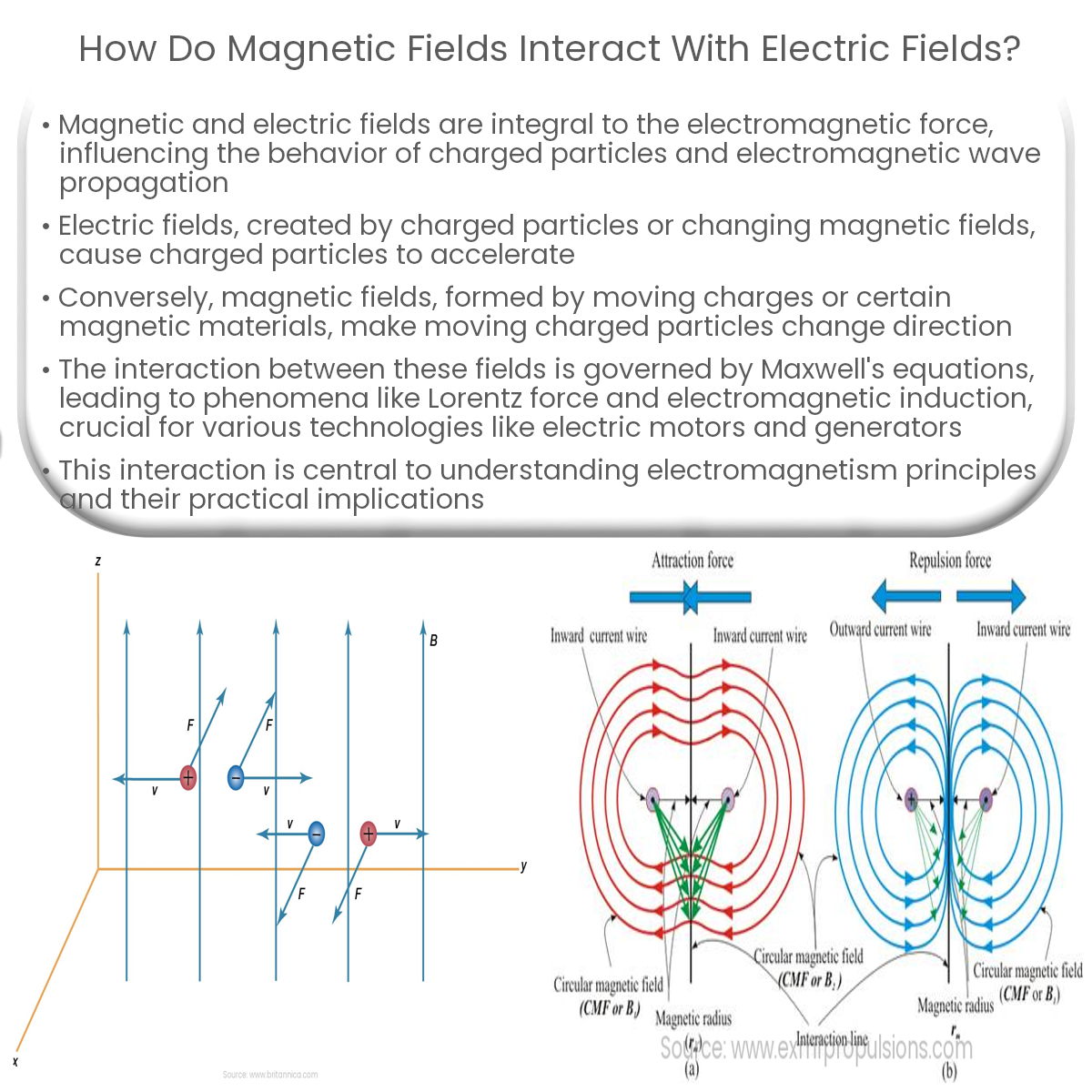Magnetic fields interact with electric fields through phenomena like the Lorentz force, electromagnetic induction, and the propagation of electromagnetic waves.
Magnetic and Electric Field Interactions
Magnetic fields and electric fields are two fundamental components of the electromagnetic force, which is one of the four fundamental forces of nature. The interaction between magnetic and electric fields plays a crucial role in understanding the behavior of charged particles and the propagation of electromagnetic waves.
Electric Fields
An electric field is created by charged particles, such as electrons and protons, or by changing magnetic fields. The strength and direction of an electric field at any point are determined by the magnitude and distribution of the charges creating it. Electric fields exert forces on charged particles, causing them to accelerate in the direction of the field.
Magnetic Fields
Magnetic fields, on the other hand, are created by moving charges or by certain magnetic materials. Unlike electric fields, magnetic fields do not exert forces on stationary charged particles. Instead, magnetic forces act on moving charged particles, causing them to change direction but not speed.
Interaction between Electric and Magnetic Fields
The interaction between electric and magnetic fields is described by the set of four fundamental equations known as Maxwell’s equations. These equations relate the electric field, magnetic field, charge distribution, and current distribution in a unified manner, demonstrating how changes in one field can affect the other.
- When a charged particle moves through a magnetic field, it experiences a magnetic force, known as the Lorentz force, that is perpendicular to both the magnetic field and the particle’s velocity. This interaction causes charged particles to follow curved trajectories, resulting in phenomena like the circular motion of electrons around magnetic field lines.
- A changing magnetic field can induce an electric field, a phenomenon known as electromagnetic induction. This principle is the basis for the operation of electrical generators, transformers, and inductors, which convert mechanical energy into electrical energy or transfer electrical energy between circuits.
- Conversely, a changing electric field can generate a magnetic field. This interaction is responsible for the propagation of electromagnetic waves, such as light, radio waves, and microwaves, which consist of oscillating electric and magnetic fields traveling through space.
- Finally, the mutual influence of electric and magnetic fields is vital in understanding the behavior of charged particles in various applications, such as electric motors, particle accelerators, and plasma physics.
In summary, the interaction between magnetic fields and electric fields is fundamental to the behavior of charged particles, the propagation of electromagnetic waves, and various technological applications. Understanding this interaction is essential for comprehending the principles of electromagnetism and its practical implications.


